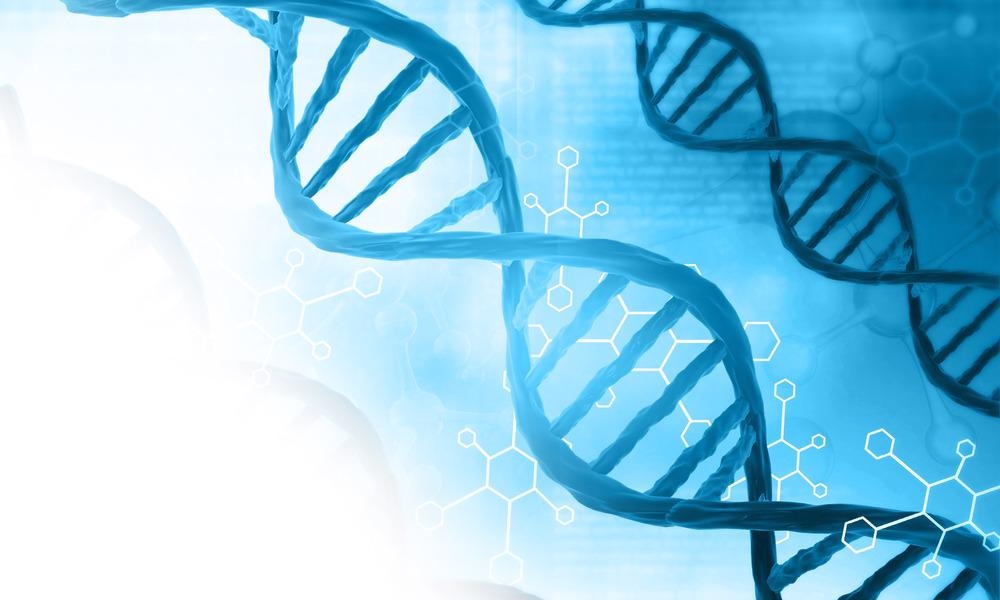The potential of DNA computing has shown progressive possibilities for information storage and large-scale computing at a nano-scale level; however, the need for complex computations requires more stable components and a more effective platform. To address this obstacle, novel research has been published in the journal of ACS Applied Materials and Interfaces.

Study: Design and Realization of Triple dsDNA Nanocomputing Circuits in Microfluidic Chips. Image Credit: Explode/Shutterstock.com
DNA computing is an area of science that is based on using biomolecules as essential elements of electronic devices. This concept would enable the performance of logical and arithmetic operations through the use of DNA properties by replacing traditional carbon or silicon chips with biochips.
DNA Computing
During the 1990s researchers had explored the ability to use DNA to store and process information outside of its original biological application. A proof-of-principle study had been undertaken in 1994 by Leonard Adleman, who built the first DNA-based computer and pioneered this field into fruition by demonstrating its use for solving mathematical problem, such as the Hamilton Path problem.
This mathematical problem is also known as the Travelling Salesman problem, involving a puzzle where a salesman must visit a number of cities that are interconnected by a limited series of roads without passing through any city more than once. This problem is quite complex with the most advanced supercomputers that would take years to calculate the optimal route for 50 cities.
Interestingly, as a result of this research, interest from researchers had grown to possibly replace silicon with DNA for use within computers; the use of DNA and a mix of 1,018 strands of DNA could potentially operate with 10,000 times the speed of current advanced supercomputers. However, due to inherent problems, the use of DNA computers has had a slow progression.
Challenges of DNA Computing
DNA computation can be categorized in two main ways, comprising (i) pure DNA circuits and (ii) DNA circuits that are dependent on enzymes and proteins.
Pure DNA circuits have the benefit of being able to be used for a wide range of applications; however, this category of DNA computation has a higher design requirement.
In contrast, DNA circuits that are dependent on enzymes and proteins are easier to design, and so these require strict experimental conditions that have lower computation speed and so this can limit the development of DNA circuits.
A logic gate consists of a physical device with an underlying Boolean function, which allows for the performance of a logical operation and generates a single binary output with one or more binary inputs.
DNA strand displacement, which depends on the melting temperature between DNA strands, underlies most of Boolean logic gates of pure DNA circuits, and this is a competitive reaction between input and output strands.
The various obstacles that are associated with this use can include possible incomplete or leaking reactions that are due to the reaction temperature not being accurately controlled; other effects from this route cause can also result in increased reaction loads, as well as other unexpected side effects.
These challenges have resulted in a requirement for a better design of DNA circuits that are able to work within a range of different temperatures including room temperature, due to the discrepancies caused by a lack of temperature control in conventional circuits.
Innovative Research
To address these issues, innovative researchers have proposed a more stable design of logic gates, which is based on a triple, double-stranded DNA (T-dsDNA) structure. This research utilized DNA nanocircuits and was able to perform computations within a microfluidic chip device at room temperature.
The researchers state that an ideal DNA computation should be performed in a small cell at room temperature, as opposed to within a test tube with a fluorescent PCR instrument, as this can limit its operational efficacy and speed.
The use of an ideal DNA computation, such as within this novel study, can improve the computational speed and resolution of the signal.
This novel research allows the application of modular microfluidic chips to different computing combinations, and this can eliminate the issue of artificial sample addition error in more than one operation through fixing the mixing degree of DNA and liquid flow rate.
The microfluidic device was applied to precisely control the ratio as well as type of each step of the input and to simplify the inspection of the computation results; as a result, this was able to reduce the experiment time to seconds.
Future Outlook
The thermal stability this innovative DNA structure provided, through T-dsDNA, was able to aid in further developing DNA logic gates.
The nanoscale computing element and properties allowed this research to further the field of DNA computing with microfluidic chips being able to provide for more integrated DNA molecular computing and achieve complex computations within seconds.
The researchers of this study have aimed for further research in this area to include optimization of the equipment which would allow for enhanced computation speed.
The advanced development in this area could potentially allow for the replacement of silicon chips within computers and replace supercomputers for faster and more effective calculations. This can aid in advancing various fields with calculations and simulations being able to be analyzed within a shorter amount of time.
Other potential applications include electronics, technology, aerospace, information security as well as medicine.
Reference
He, S., Cui, R., Zhang, Y., Yang, Y., Xu, Z., Wang, S., Dang, P., Dang, K., Ye, Q. and Liu, Y., 2022. Design and Realization of Triple dsDNA Nanocomputing Circuits in Microfluidic Chips. ACS Applied Materials & Interfaces,. Available at: https://pubs.acs.org/doi/10.1021/acsami.1c24220
Further Reading
Parker, J., (2003) Computing with DNA. EMBO reports, 4(1), pp.7-10. Available at: https://dx.doi.org/10.1038%2Fsj.embor.embor719
Disclaimer: The views expressed here are those of the author expressed in their private capacity and do not necessarily represent the views of AZoM.com Limited T/A AZoNetwork the owner and operator of this website. This disclaimer forms part of the Terms and conditions of use of this website.